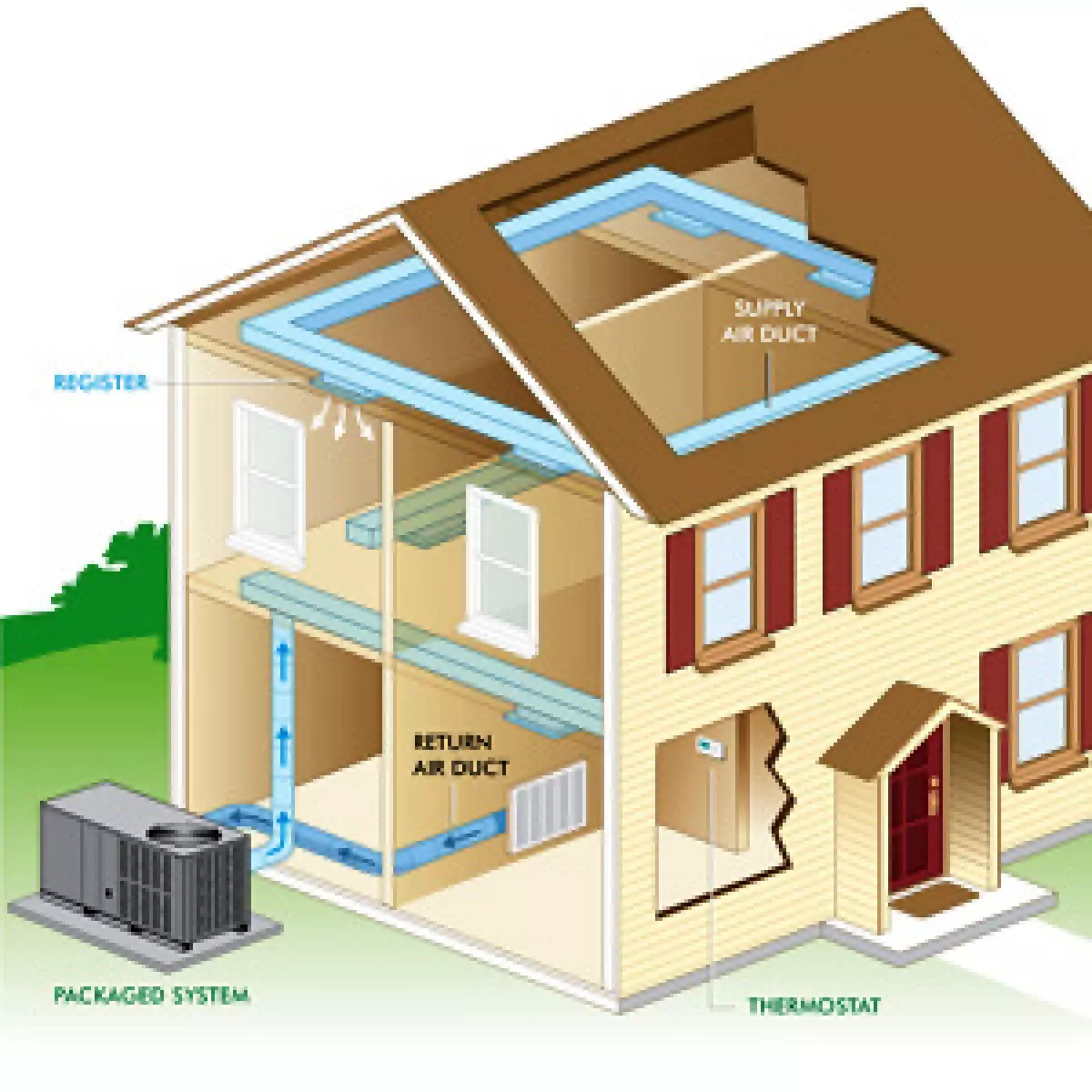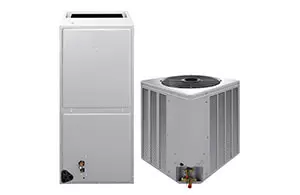 An HVAC packaged unit
An HVAC packaged unit
When it comes to ensuring year-round comfort in your home, HVAC (Heating, Ventilation, and Air Conditioning) systems are the go-to solution for most homeowners. However, choosing the right system can be a bit confusing. There are two main types of HVAC systems - packaged units and split systems - each with its own set of benefits and considerations. In this article, we'll explore the differences between these two systems and help you determine which one is the right choice for your home.
What is an HVAC Packaged Unit?
 An HVAC split system
An HVAC split system
An HVAC packaged unit is an all-in-one system that is perfect for homes without crawlspaces or basements. It houses all the components - including the evaporator coil, condenser, and compressor - in a single metal cabinet, saving indoor space. The unit is usually placed on the ceiling of a house or on a cement slab outside. Specially-made ductwork connects the outdoor cabinet to all the rooms in the home. Despite being located outdoors, the system's functions are controlled indoors. Some packaged units even include a natural gas furnace or electric heating coils. Essentially, a packaged HVAC unit comprises everything needed for a central air system in one convenient unit placed outside the home.
What is an HVAC Split System?
An HVAC split system, on the other hand, is designed for homes that have ample space for large indoor cabinets. This system features an outdoor cabinet that houses the condenser and compressor, while an indoor cabinet holds the evaporator coil. The cool air is sent through the duct system by an air handler, and a line set, a copper tube, connects both the indoor and outdoor components to circulate the cold air throughout the house.
Benefits of Each Type of HVAC
Both packaged units and split systems offer unique benefits that cater to different home configurations.
HVAC Packaged Unit
- Efficiency: Packaged units are assembled in factories, which often results in higher efficiency compared to split systems.
- Easy Installation: As packaged units are a single unit, they are easier and more versatile to install. This leads to lower installation costs and a smaller footprint on your property.
- Less Invasive: Since the package system is all-inclusive, there's no need for additional refrigerant lines.
- SEER Rating: The Seasonal Energy Efficiency Ratio (SEER) for packaged units ranges from 13 to 18, which is considered good.
- Quiet Operation: Since the entire system is located outside, you won't experience any noise inside your home.
HVAC Split System
- More Efficient: Split systems typically have a higher SEER rating, usually 25 or above, making them more energy efficient compared to packaged units.
- Customizable: Split systems offer more flexibility in terms of placement due to their two-component design.
- Lower Maintenance: Ductless mini-split systems have lower maintenance costs compared to other central air systems.
- Value-Adding: The high energy efficiency of split systems has the potential to add resale value to your home.
Considerations for Each Type of HVAC
Both systems come with their own set of considerations that should be taken into account when choosing the right one for your home.
HVAC Packaged Unit
- Roofs: If the condenser is located on your roof, improper installation can lead to leaks and other issues.
- Weather and Animal Damage: As the system is located outdoors, it is susceptible to weather and animal damage. Animals may find their way inside the unit for shelter.
- Lifespan: Packaged systems are prone to rust and typically have a shorter lifespan.
HVAC Split System
- Proper Installation: A poorly installed split system can reduce its efficiency and effectiveness.
- Labor Intensive: Split systems can be more expensive to install due to higher labor costs.
- Leaks: More moving parts in a split system mean more opportunities for inefficiencies, such as cracks, crevices, and bad ductwork.
How to Choose the Right System
Choosing the right HVAC system for your home depends on several factors.
- Existing System: If you already have an HVAC system, it is often more cost-effective to stick with the same type.
- Home Size: For smaller homes with limited storage space, a packaged unit is typically the best option. For larger homes or those with basements or crawlspaces, a split system is a better fit.
Whatever system you need, Petro Home Services has you covered. With our expertise in HVAC systems, we can find the right solution for your home's specific needs. From design and installation to maintenance, our technicians will ensure that your HVAC system keeps your home comfortable and energy-efficient. Contact us today for a consultation and discover the best way to optimize your home's comfort with an HVAC system.












